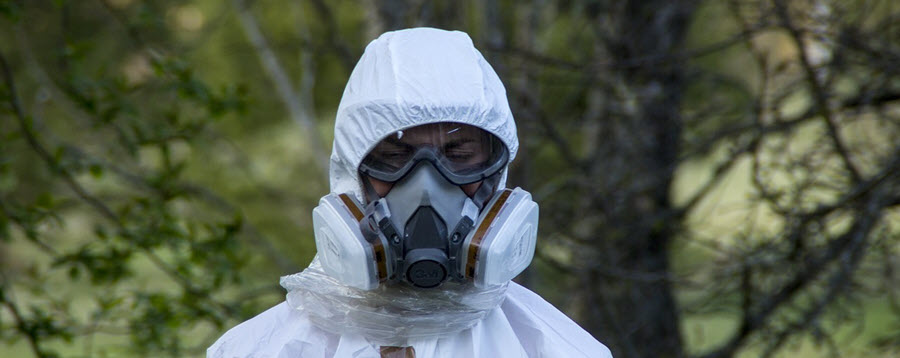
Sandblasting and Spray Painting Safety

Spray painting and sandblasting serve two entirely opposite functions, but from a safety standpoint they create many similar hazards for workers. A new article from Safety Management Group in Indianapolis explores the hazards inherent to both operations, as well as steps that can minimize risks. Here’s a recap of the post.
Hazards in Common
- Most hazards associated with spray painting are directly related to the chemicals being used.
- Sandblasting and similar abrasive operations tend to be inherently noisy and dusty.
- Both operations can create harmful mist or dusts that can be inhaled or swallowed, come in contact with the eyes and mucous membranes or be absorbed through the skin.
- Chemicals in sprayed paints and coatings and dust from sandblasting can create potentially flammable or explosive atmospheres that could be ignited by a number of sources on a jobsite.
Common Protection Protocols
- Spray booths and exhaust ventilation
- Water-based coatings and abrasives may produce fewer hazards than solvent-based materials
- Schedule blasting and spraying tasks at times when fewer workers are in the immediate area
- Prohibit eating and drinking in areas where spray painting or sandblasting takes place
- Issue the correct personal protective equipment for specific tasks and environments
- Provide thorough training and hazard communication
Sandblasting and Spraying Safety Info from OSHA
During spray painting operations, the atomization of paint increases the surface area of the liquid, which creates two primary hazards – worker exposure to toxic or hazardous substances and fires or explosions. Although the use of highly toxic coatings has been greatly reduced over the years, the potential for workers to become exposed to excessive concentrations still exists. Workers performing spray paint operations are at a higher risk for respiratory exposure than workers using brushes or rollers. Exposure occurs when paint becomes airborne, which increases release of toxic vapors into the atmosphere. This is especially true in a confined space. OSHA standards specify permissible exposure limits (PELs) for workers.
Is a similar way, blasting operations can release toxic elements into the air. Employers must protect workers from hazardous dust levels and toxic metals that may be generated from the blasting material and the underlying substrate and coatings being blasted. Each abrasive blasting operation is unique, involving different surfaces, coatings, blast material and working conditions. Before beginning work, employers should identify the hazards and assign a knowledgeable person trained to recognize hazards and quickly take corrective action to eliminate them.
Cleanup of both spraying and blasting equipment presents additional hazards that must be considered.
Learn more with these resources:
- Read the full article here.
- Download an OSHA fact sheet on abrasive blasting.
- Visit the OSHA Abrasive Blasting page.
- Visit the OSHA Spray Painting page.
- Visit the NIOSH Abrasive Blasting page.
- Browse No Open Flames safety signs, Personal Protective Equipment OSHA signs or No Food or Drink notices to help keep employees safe around sand blasting and spraying activities.

